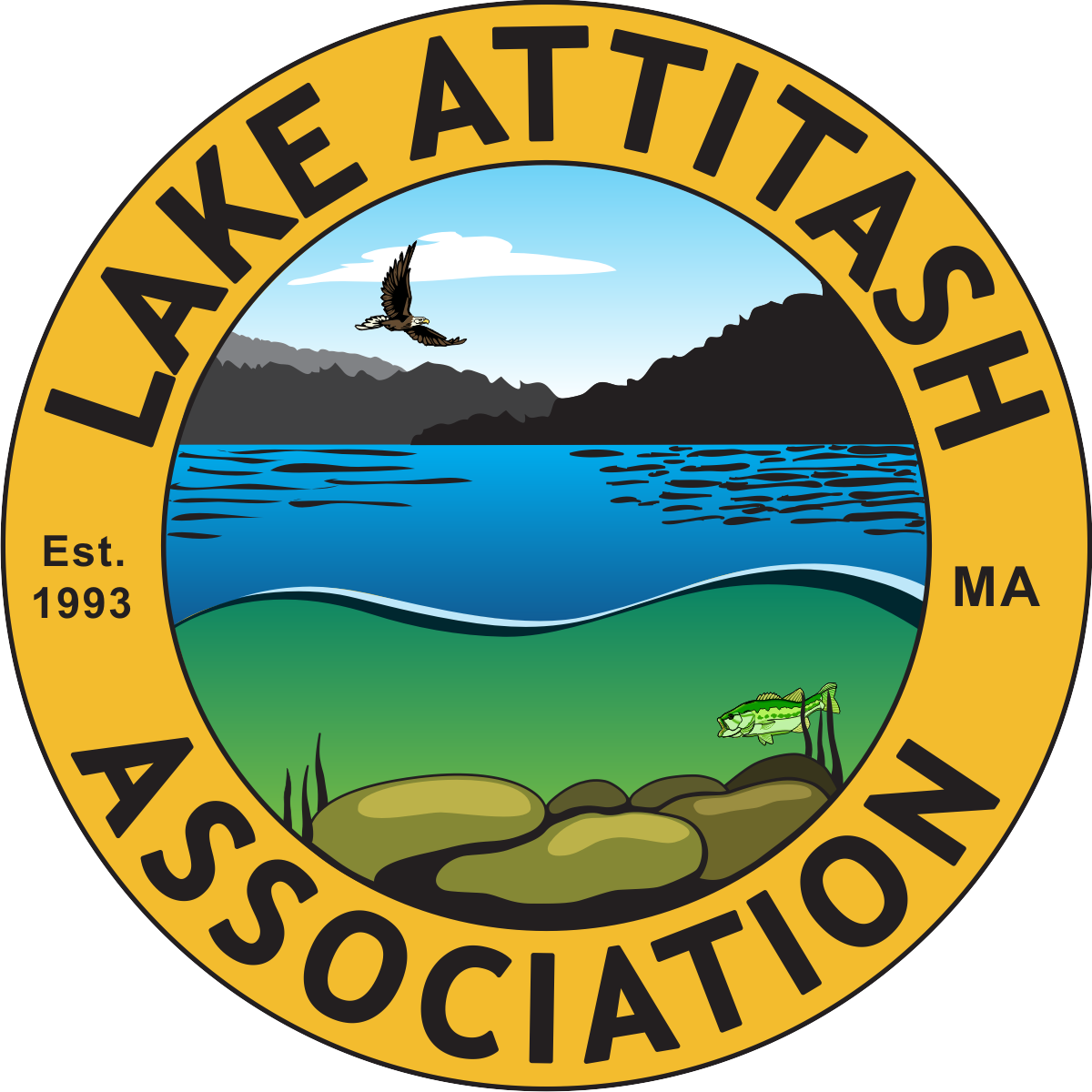Protecting the Lake: The Watershed

What is a watershed?
A watershed is an area that drains into a common waterway, such as a stream, lake, estuary, wetland or even the ocean. Watersheds provide our drinking water, habitat for wildlife and the streams and lakes that we use for fishing, boating and swimming.
What happens on the land within our watershed is very important for an organization concerned about water quality because the path that a drop of water takes from the place where it lands as a raindrop to the lake dictates the state of the lake. Does it pick up contaminants along the way? Does it move quickly, leading to erosion or flash floods almost immediately after a rainstorm? Does it travel overland to the stream or lake, or does it sink downwards, joining the groundwater reserves underground first?

Q: Why is it important to manage storm water within our watershed?
A: Because Phosphorus continues to pour into the lake with every rain storm!
The 2019/2020 Alum grant was a once in a lifetime $600,000 treatment for our lake designed to reduce the hazardous cyanobacteria blooms that threatened the health and safety or residents and animals alike. The quality of water in our lake is an indicator as much as it is a goal in and of itself. If our lake is clean and safe for drinking, swimming, and fishing, it means that the watershed is also healthy and functioning as an ecosystem should.
The improved water quality we are working to protect in Lake Attitash is the result of decades of grant funded and volunteer work, including the installation of town water and sewer all around the lake, improved storm water management in both communities and culminating in a $600,000 grant award from the U.S. Environmental Protection Agency and the Massachusetts Department of Environment Protection in 2019 / 2020. This grant’s purpose was to address the high levels of phosphorus, carried from the watershed in storm water run-off to accumulate in the sediment at the bottom the lake. These nutrients feed the hazardous blue-green algae or cyanobacteria blooms that used to plague our lake.
The alum treatment settles like a ‘blanket’ on the sediment, sealing in the nutrients so they do not enter the water column and feed the cyanobacteria.
Large impervious surfaces such as roofs, driveways and parking areas prevent rain from being absorbed into the earth. As this water passes over these impervious surfaces it picks up sediment loaded with nutrients from fertilizer; bacteria from animal poop; and pathogens and chemical pollutants on the way to the storm drain. Any water that enters a storm drain, or flows from your property to a nearby stream or to the lake is “untreated,” which means that the polluted sediment is not filtered out by the earth or allowed to settle out like it might if it were directed into a raingarden or retention basin. There are many local storm drains that empty untreated runoff directly into Lake Attitash.
What can we do to reduce the flow of Phosphorus and other pollutants into the lake?
- Use fertilizer only as permitted by the law. Avoid applying phosphorus whenever possible.
- Use a rain barrel to collect rainwater from your roof gutters. This water can be used for gardening. A rain barrel can save an average of 1300 gallons of water during peak summer months.
- Create a Rain Garden A rain garden is simply a shallow depression in your yard that is planted with native wetland plants, wildflowers, shrubs or grasses. Correctly placed across an area where storm water flows it absorbs the runoff, takes up the nutrients and filters the water.
- Create a Buffer Gardens Buffer gardens are planted on the water’s edge, between your lawn and the lake. They serve as a living filter because they capture many of the pollutants that flow through them. Their root systems hold the soil in place, prevent erosion and provide a beautiful addition to your view.
- Use Pervious or porous Surfaces When planning or renovating a patio, walkway or driveway, use porous materials like pervious pavers, gravel, sand, or stones when you can.
- Household hazardous waste for information on disposing of used motor oil
Contact Amesbury or Merrimac to find out when they have Household Hazardous Waste Collections Days.
Never, Never, Never dispose of used motor oil, paints of other hazardous waste, including pet waste into the ground or down a storm drain!!
Eventually it will find its way into our lake.
